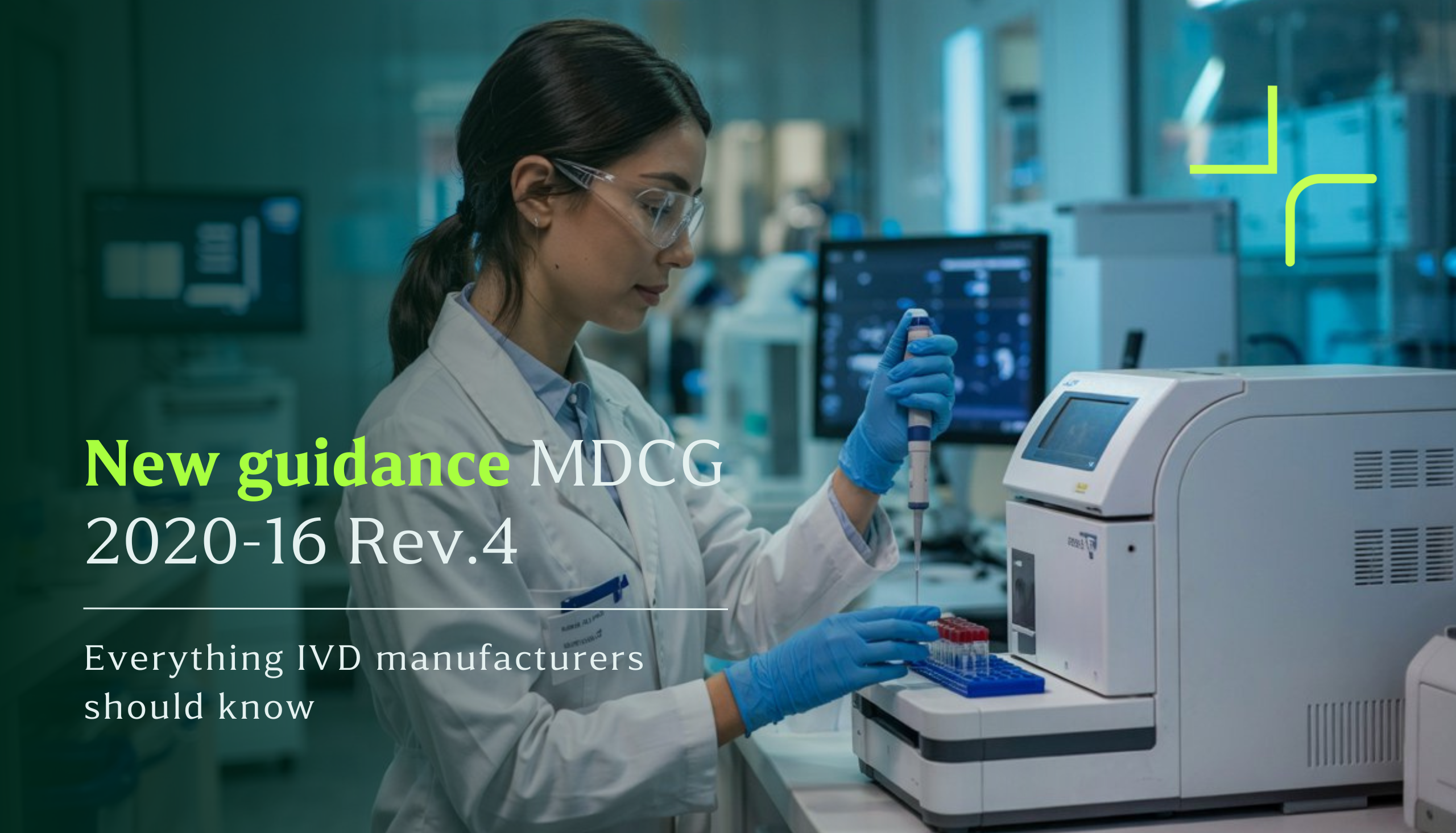IVD Classification: What’s new in the latest MDCG 2020-16 Rev.4 guidance?
Written by: Manuel Mateos CEO and Regulatory Affairs Director, CMC Medical Devices & Drugs S.L.
In March 2025, the Medical Device Coordination Group (MDCG) released an update to its guidance MDCG 2020-16 Rev.4, focused on the classification of in vitro diagnostic medical devices (IVDs) under Regulation (EU) 2017/746 (IVDR).
This document plays a crucial role for IVD manufacturers who aim to ensure regulatory compliance while maintaining access to the European market.
Why this update matters
Classification is more than just a technical formality. It directly influences the entire regulatory pathway, including whether a Notified Body is required, the scope and complexity of the technical documentation, post-market obligations such as PSURs and vigilance, and ultimately, the time and costs associated with market access.
In short, accurate classification helps manufacturers minimise risks, avoid unnecessary delays, and streamline the route to CE marking.
What’s changed in Rev.4?
The 2025 revision introduces several practical updates compared to the previous version. These include revised examples for classification Rules 1, 4(a), and 6, an updated explanatory note for Rule 3(m) concerning neonatal screening, and editorial changes to Annexes 1 and 2.
The guidance also provides clearer definitions of key terms such as “kit,” “monitoring,” and “screening,” while placing greater emphasis on the importance of the intended purpose, which refers to the use as declared by the manufacturer.
This aspect is particularly crucial. The way the intended purpose is described in the technical documentation, instructions for use, and promotional materials can significantly affect the device’s classification. If the wording is unclear or inconsistent, the product may be classified under a higher-risk category, leading to more demanding regulatory requirements.
Practical examples to support interpretation
To assist manufacturers in applying the classification rules correctly, the updated guidance includes a variety of practical examples. These are especially useful for differentiating between Class C and Class D devices and for understanding how the rules apply to infectious disease tests, genetic tests, companion diagnostics, and software-based IVDs.
For those navigating the complex IVDR framework, this document offers valuable clarification and helps ensure a more consistent interpretation of the classification system.
You can download the full MDCG 2020-16 Rev.4 guidance here.
At CMC Medical Devices, we assist manufacturers seeking to enter the European market with their IVDs by offering support in representation, registration, and global compliance strategy. If you are preparing your documentation or exploring the steps required under the IVDR, we invite you to discover our dedicated service: Learn more about our IVDR support.
Final thoughts
For IVD manufacturers looking to remain competitive within the EU, this revised version of MDCG 2020-16 is essential reading. It offers not only updated regulatory insights but also practical tools to help avoid misclassification and plan compliance efforts more effectively.
We are committed to supporting manufacturers by sharing timely updates and useful resources. If you are working on IVD registration or simply wish to stay informed, follow our channels to stay up to date with the latest developments.



